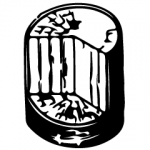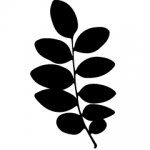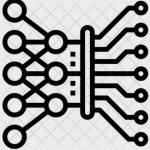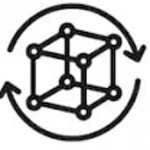P1 | Dynamic patterns of the plant growth regulator auxin
PI: Karen Alim
Personnel:
coming soonP2 | Quantitative analysis of the cellular growth dynamics during lateral stem growth
PI: Thomas Greb
Lateral growth of plant shoots and roots is based on the activity of a group of stem cells, the cambium, and essential for generating large plant bodies. Thereby, it substantially contributes to the dominance of seed plants in terrestrial ecosystems, to wood formation and thus to carbon immobilization. In addition, the process represents a striking example for a constant remodeling of adult body structures without impairing their actual function. Thus, lateral growth provides excellent opportunities for addressing the fundamental question of how cellular properties are integrated and adapted during the growth of adult organisms and how postembryonic growth processes integrate constraints of the existing body. Importantly, because the overall shape of plant growth axes stays cylindrical during their lateral expansion, the process provides the unique opportunity to analyze growth without having to consider the change of organ shape. Another unique feature is that organ expansion happens exclusively in lateral orientation implying that a 2-dimensional view on plant growth axes is sufficient for a meaningful characterization. Importantly, the process has been described histologically, but a systemic model implementing physical and developmental interactions in a quantitative manner is pending.
In this project, we will employ a combination of computational modelling, informative tissue marker lines, mutants affected in cambium activity and Brillouin spectroscopy to establish a quantitative model of lateral plant growth taking into consideration both physical and developmental constraints. Importantly, the power of the established models the role of decisive parameters will be tested by quantitatively comparing lateral growth in Arabidopsis thaliana and Cardamine hirsuta. In case of being instructive, predictions made by the model will be tested molecularly in comparative approaches. Following this strategy, our project will provide insight into the cellular, genetic, and physical cues that are involved in the regulation of the growth of mature plant organs using a rather simple morphodynamic system.
Personnel:
coming soonP3 | Probabilistic extraction of cell geometries in complex biological images
PI: Fred Hamprecht
In this project, we will address the fundamental problem of plant cell segmentation in 3-dimensional tissue images from various imaging modalities (light-sheet, confocal, two-photon microscopy). Reliable segmentation and characterization of cell shape are crucial prerequisites for the desired understanding of cell morphodynamics. Specifically, segmentation allows to:
- define object identity, which is required to assign properties to individual objects (e.g. position and brightness) and to track individuals over time.
- define object boundaries, which are the basis for any analysis of object geometry (e.g. shape, size, and aspect ratio).
- define object adjacency, which is needed to investigate relationships between neighboring objects and characterize groups of objects.
These tasks are central for many projects in this RU, yet challenging for at least three reasons: (i) Cell boundaries often have low definition due to image acquisition problems such as noise, staining artefacts, and interference between neighboring structures. (ii) The cell types to be investigated exhibit high biological variability not just across different species (and even realms), but also within a single image or sequence. (iii) The amount of data (3D + time) will be large and requires efficient algorithms.
We will address these challenges by novel segmentation algorithms based on modern machine learning concepts. In addition, we will take advantage of the fact that many datasets in this RU are comprised of two fluorescent channels, separately depicting the cell walls and nuclei. This allows us to design a seeded segmentation workflow that first detects nuclei and then uses them as starting points of a region growing process that reliably detects the corresponding cell interiors and walls. Rapid adaptation of this algorithm to new datasets will initially be achieved by means of traditional machine learning methods (hand-designed features, random forests) and later improved by convolutional neural networks (CNNs). These methods will be trained from representative example segmentations provided by domain experts. Various new training strategies, along with algorithmic simplifications and software optimization, will be implemented to speed-up training of the CNNs and reduce their hardware requirements. Biological priors that can disambiguate difficult segmentation decisions will be utilized by means of lifted multicut models acting on top of the CNN outputs. Our solutions will be designed to complement the capabilities of alternative software (e.g. MorphoGraphX) and to facilitate subsequent analysis and modelling of the underlying morphodynamics. User-friendly workflows bundling the new algorithms will be incorporated into our open-source image analysis software ilastik, making the new methods readily accessible to all members of the consortium and interested researchers worldwide.
Personnel:
coming soonP4 | The role of cell geometry and anisotropy in explosive pod shatter
PI: Angela Hay
Unlike animals, plants don’t have muscles, and need to rely on entirely different mechanisms than motor proteins to move their organs. These mechanisms typically exploit the forces generated by water movement and involve irreversible growth, reversible swelling/shrinking, or differential contraction through drying. However, these processes are constrained by the maximum speed of water transport across cells and tissues, and are not rapid enough to explain movements at a millisecond timescale. Rapid movements can be achieved via mechanical instabilities, which allow the slow build-up of pre-tension and its sudden release upon mechanical failure. We recently described how Cardamine hirsuta implements such an instability in order to amplify a coiling motion of its fruit walls and explosively disperse its seeds in less than 3 milliseconds. Surprisingly, we discovered that C. hirsuta uses a novel mechanism to generate the pre-tension that powers this rapid movement. Tension is produced by differential contraction of fruit wall tissues, and previously, this was thought to occur passively as the fruit dried. Instead, we found that tissue contraction is an active process, accomplished by the anisotropic deformation of living cells that sustain turgor pressure. Using a computational model of pressurized, three-dimensional plant cells to recapitulate this contraction, we identified cell geometry and cell wall anisotropy as key components of this mechanism. In this project, we aim to test this prediction of our model; that these cellular parameters are critical components of active tissue contraction. For this, we will follow a morphodynamics approach to gain a quantitative and predictive understanding of how tension is generated in growing fruit tissues to power explosive pod shatter.
Personnel:
coming soonP5 | From stem cell activity to shoot morphology
PI: Jan Lohmann
Shape and activity of the shoot apical meristem (SAM) have a profound influence on plant morphology. Since all above ground organs are directly derived from this stem cell system, regulatory programs controlling cell proliferation and organ initiation are tuned to perform within a set of morphological parameters of the shoot apex. However, neither the role of basic cellular features of the meristem, such as cell number, cell size, or cell wall stiffness, nor the influence of differential cell fate e.g. stem cell fate vs. non-stem cell fate, on shoot morphology have been fully resolved. Using quantitative morphodynamics, we have recently found that environmental parameters, such as ambient temperature or day-length, have a substantial effect on the layout of the apical stem cell system. This influence extends from the basic cellular arrangement within the shoot meristem to the number and localization of stem cells and follows distinct regulatory dynamics, which can be temporally uncoupled. While stem cell identity responds quickly and reversibly to transient perturbations, cell size and number within the shoot apical meristem are fixed within a critical developmental window, allowing us to specifically modify stem cell fate against several stable SAM morphologies within physiological parameters. In addition to short term acclimatization responses to light and temperature, we have also identified substantial morphological and cellular variations in SAMs of Arabidopsis accessions collected from diverse habitats. These accessions also differ in their architectures, suggesting that regulation of SAM layout and morphogenetic processes might be evolutionary linked.
In the framework of the research unit morphodynamics, we will now study the intricate interplay between shape and cell fate signaling in the SAM using an integrated approach build on environmental perturbations, advanced cell type specific genetics, recording of mechanical parameters, multispectral live imaging, as well as mathematical modeling. We expect to identify important regulatory nodes guiding SAM function and shoot morphology, mechanisms underlying the feedback between SAM layout and stem cell activity, including mechanics, as well as their relative contribution to developmental plasticity.
Personnel:
coming soonP6 | Dynamics and determinants of cell fate acquisition during lateral root morphogenesis
PI: Alexis Maizel
Root system architecture in dicotyledonous plants is mainly determined by the post embryonic growth of primary root and formation of lateral roots (LRs) that allow roots to forage and anchor plants. This de novo formation of LRs is an exquisite system to study the dynamics of 3D plant organ morphogenesis. LRs derive from a limited number of homogeneous founder cells that proliferate to form a primordium with stereotyped shape and tissue organisation. LR tissue organisation is similar to the one of the primary root which was specified during embryogenesis. In particular, a meristem is formed de novo which sustains the autonomous growth of the LR. Although the ontogeny of LRs has been described, how de novo pattern formation and outgrowth of LR is set up in an orthogonal axis to the original embryonic root axis remains an important question. Our recent work showed that LR morphogenesis is not deterministic but rather results from a self-organising process. A combination of empirical observations and modelling have shown that the canonical organisation and shape of the primordium is determined by the correct orientation and asymmetry of the first division of the founder cells as well as by the mechanical constraints imposed by the overlying tissue. As there are so far no comprehensive dynamic analyses of the patterning of LR primordium, it remains unknown whether, at cell scale, the patterning of the primordium is a robust process. We make the hypothesis that the patterning of the LR primordium is intimately linked to its internal geometry. We therefore propose to reveal the dynamics of cell differentiation occurring during LR morphogenesis, linking it to geometric (a)symmetries during cell division, auxin flow and auxin signaling, taking advantage of our unique microscopical and quantification toolboxes. To this end, we will:
- dynamically follow the ontogeny of cell identity acquisition, cell attributes (growth anisotropy, geometric asymmetry in division), auxin flow and auxin signaling at the cell scale by light sheet fluorescence microscopy (LSFM).
- induce perturbations by either using mutants affected in division plane orientation, cell growth and overall primordia shape or by performing targeted cell ablation. In both cases, we will monitor, by LSFM, the impact on auxin signaling patterns, cell division orientation and cell identity emergence.
- mechanistically probe the role of auxin in controlling cell division and identity acquisition. For this, we will use local and inducible inhibition of auxin signaling and monitor the impact on cell division and differentiation by LSFM.
- This project will shed light on the mechanisms of the de novo establishment of a stem cell niche and establish the grammar of LR patterning. It will significantly push the limits of our understanding of stem cell regulation, tissue patterning and morphogenesis in plants.
Personnel:
coming soonP7 | Quantitative analysis of the cellular growth patterns shaping the Arabidopsis ovule
PI: Kay Schneitz
The ovule is the predecessor of the seed and thus central to sexual plant reproduction. Apart from its highly interesting biological function the ovule of Arabidopsis thaliana also represents an excellent model system to study organogenesis. Several features, such as the planar growth of its integuments or its characteristic curved shape, raise interesting questions regarding the molecular, cellular, and mechanical basis of tissue morphogenesis. In this interdisciplinary project we will combine advanced microscopy and image analysis, genetics, and computational modeling to quantitatively assess the cellular basis of ovule development. We will generate a digital 3D ovule atlas with cellular resolution. In addition, we will develop computer models that describe the outgrowth of the two integuments. The digital atlas and the computer models will then be invoked in an investigation of planar integument growth. In addition, we will study the cellular basis of the curved outgrowth of the outer integument. Collectively, the results will not only lead to a refined understanding of ovule development but also contribute to a better general understanding of the interplay between genetics, cellular behavior, and mechanics that controls plant tissue morphogenesis. The proposed research will combine genetic, cell biological and computational approaches that will provide a hitherto unprecedented quantitative description of the cellular and mechanical basis of ovule development, in particular integument morphogenesis and ovule curvature. Moreover, they will enable interesting comparisons to recently developed concepts that include mechanical influences in the control of tissue morphogenesis.
Personnel:
coming soonP8, Mercator Fellow | The role of cell geometry, growth and mechanics in plant cell division
PI: Richard Smith
Since plant growth is symplastic, plants must create their form by precisely regulating cell growth and division. It has been proposed that plants have default rules for symmetric cell division, defined as divisions where the daughter cells have the same fate. Proposed rules have been based on the geometry of the cell, growth directions, or mechanical stresses, although none of these seems able to capture plant-wide cell behaviour. Since these factors are interrelated, it seems likely that there is an underlying default rule for all cells, and the differences observed are due to different growth rates, the mechanical environment perceived by the cell or other parameters. It has also been reported that non-symmetric or formative divisions often do not follow the default rule, and that there is an association between geometric asymmetry and daughter cell fate asymmetry. In this project we will use a computational morphodynamics approach to quantify growth and cell division in 3D, to determine which parameters the cell is using to orient division. We will build a 3D mechanical model of the tissue under study, in order to determine the stresses that cell perceives, and how these may be integrated into the determination of division plane orientation. We will then extend the model to understand how rules might be modified for formative divisions.
We will primarily use two biological systems developed by other partners in the RU. The emergence of Arabidopsis lateral root is the focus of the Maizel lab, and the development of the Arabidopsis ovule and integuments is the focus of the Schneitz lab. Both are good systems to study primary morphogenesis, as they begin with relatively few cells, have variable and often highly anisotropic growth, and result in the specification of non-trivial shapes with several different cell types. The systems show promise for full 3D imaging, and in the case of lateral root emergence, full 3D time-lapse. We will use these systems to determine the default rules for cell division in the Arabidopsis lateral root and the ovule, with the goal to unify the many different but seemingly related division rules proposed previously. We will investigate how formative divisions can be integrated into the model, and whether they are just a straightforward variation of the underlying mechanism. We will also investigate the relationship between geometry asymmetry and fate asymmetry in these systems.
Personnel:
coming soonP9 | A morphodynamic study of C. hirsuta leaf development
PI: Miltos Tsiantis
Leaves are the main photosynthetic organs of seed plants and show considerable variation in their shape. However, the morphogenetic basis for leaf shape development is poorly understood. By using comparative studies between C.hirsuta which has compound leaves with leaflets and the simple leafed A. thaliana, we established that a small gene regulatory network of the transcription factor CUP SHAPE COTYLEDON2 (CUC2), the auxin efflux transporter PIN1 and auxin underlies the iterative pattern formation of leaf serrations as well as leaflets. This finding raises the questions of what aspects of morphogenesis are different in C. hirsuta to result in formation of leaflets instead of serrations. Very recently we discovered, that regulatory diversification of the CUC2 paralogue CUC1 contributes species specific differences of leaf shape. Specifically, CUC1 is required for leaflet formation and the C.hirsuta CUC1 allele is sufficient to increase leaf complexity when introduced in A. thaliana. On this basis we hypothesize that species specific expression of ChCUC1 in leaves modifies the CUC2, PIN1 auxin gene regulatory network to promote for leaflet development in C. hirsuta. Here we propose to investigate how ChCUC1 influences action of this Genetic Regulatory Network and leaf morphogenesis using a combination of genetics, advanced imaging and computational modelling. Specifically, we will determine how ChCUC1 and its target genes influence cell polarity and growth, cell wall stiffness and cytoskeleton. The outcome of the project will be mechanistically grounded computational models that conceptualize how CUC1 influences cellular behaviour to influence leaf shape.










